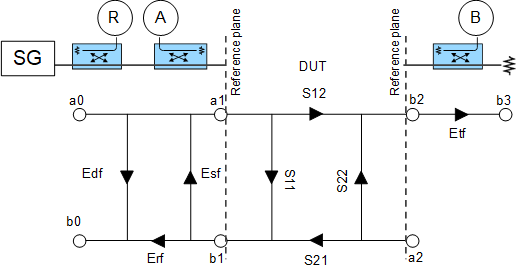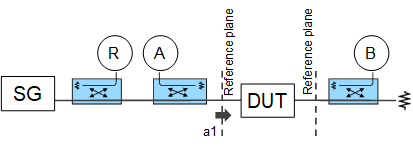
Calibrating a Modulation Distortion channel requires the following types of calibrations:
Optional calibrations:
See Also:
A Phase Reference Cal is performed, saved, and later recalled during a S-parameter calibration. This is sometimes referred to as a 'tier 1" calibration. Due to stability of the VNA, the Phase Reference Cal can be performed infrequently. It is typically performed over the full frequency range of the VNA or Phase Reference so that it can be applied to all modulation distortion calibrations that will be needed in the future.
The S-parameter calibration with power correction is the traditional method used to compute linear error terms. Enhanced response terms are applied for correction since only the forward direction is measured. The a1, b1, and b2 waves for each tone are accurately measured with enhanced response correction. The calibration frequency range should cover all of the analysis bandwidth required for the Modulation Distortion channel.

The source modulation calibration compensates the IQ data to achieve a flat frequency response in gain and phase at the reference plane. Before this calibration, the receivers must be calibrated by performing the S-parameter calibration. The DUT is connected at the reference plane when performing the source modulation calibration to achieve the best accuracy.
